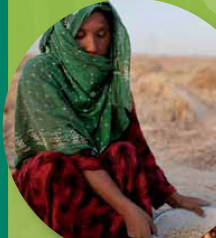Which countries around the world are in chronic states of crisis? In a report out today, the World Food Program and the Food and Agriculture Organization classify 22 countries as suffering from what they call “protracted crisis.”
The report, which is the second installment of the WFP and FAO’s flagship State of Food Insecurity in the World, offers three measurable criteria for determining of a given country makes the cut for being designated as being in protracted crisis.
1) If the country appears on something called the FAO Global Information and Early Warning System for at least eight years between 2001 to 2010 or 12 years between 1996 and 2010. This presumably demonstrates the longevity of the crisis.
2) If 10% or more of the official development assistance the country receives comes in the form of humanitarian assistance. (As opposed to, say, building hospitals and schools or supporting entrepreneurship.)
3) If the country makes this FAO list of Low Income Food Deficit Countries.
The following countries meet all three of these criteria and are thus designated to be in a “protracted crisis:”
Afghanistan
Angola
Burundi
Central African Republic
Chad
Congo
Côte d’Ivoire
Democratic People’s Republic of Korea
Democratic Republic of the Congo
Eritrea
Ethiopia
Guinea
Haiti
Iraq
Kenya
Liberia
Sierra Leone
Somalia
Sudan
Tajikistan
Uganda
Zimbabwe
The report is quite detailed, but it offers two specific ways the international community can help these chronic cases: investing in agricultural development and education.
On the former, the report notes that “only 3.1 percent of development assistance received by countries in protracted crisis is dedicated to agriculture, compared with an average of 5.8 percent for other [Least Developed Countries.] Yet the agriculture sector accounts for an average of 32 percent of protracted crisis countries’ GDP and employs an average of 62 percent of their populations.”
On the latter, the report states the percentage of development assistance allocated to education is only 3.8 percent, compared with an average of 9.6 percent for other Least Developed Countries and “Primary education receives just 1.6 percent, compared with an average of 3.5 percent for other LDCs.” This is problematic because there are several studies that link individual educational attainment with a farmer’s productivity.
Anyway, the report is far too nuanced to be summarized in a blog post. you should read the whole report if this sort of issue interests you. (And it should!)
